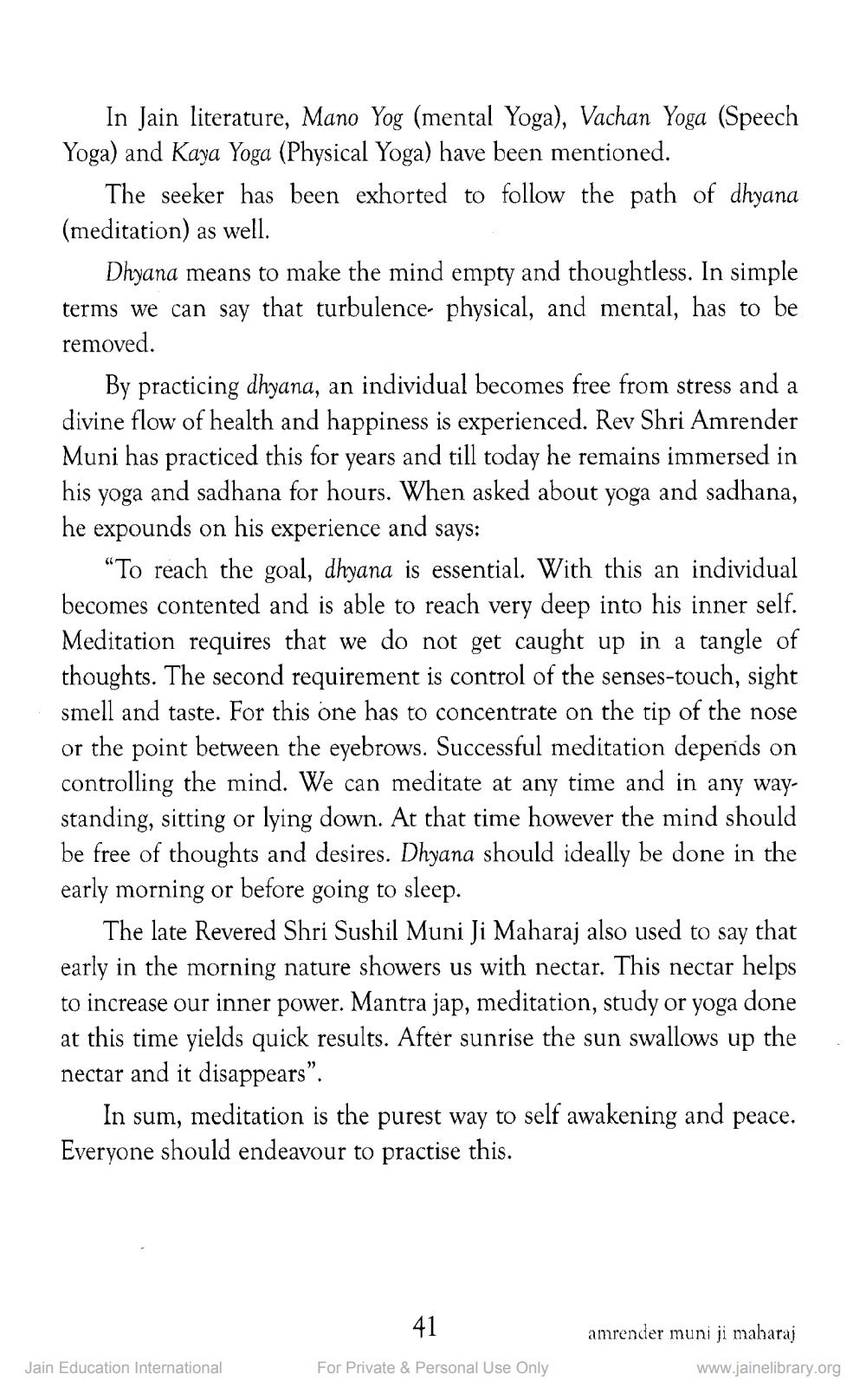________________
In Jain literature, Mano Yog (mental Yoga), Vachan Yoga (Speech Yoga) and Kaya Yoga (Physical Yoga) have been mentioned.
The seeker has been exhorted to follow the path of dhyana (meditation) as well.
Dhyana means to make the mind empty and thoughtless. In simple terms we can say that turbulence physical, and mental, has to be removed.
By practicing dhyana, an individual becomes free from stress and a divine flow of health and happiness is experienced. Rev Shri Amrender Muni has practiced this for years and till today he remains immersed in his yoga and sadhana for hours. When asked about yoga and sadhana, he expounds on his experience and says:
“To reach the goal, dhyana is essential. With this an individual becomes contented and is able to reach very deep into his inner self. Meditation requires that we do not get caught up in a tangle of thoughts. The second requirement is control of the senses-touch, sight smell and taste. For this one has to concentrate on the tip of the nose or the point between the eyebrows. Successful meditation depends on controlling the mind. We can meditate at any time and in any waystanding, sitting or lying down. At that time however the mind should be free of thoughts and desires. Dhyana should ideally be done in the early morning or before going to sleep.
The late Revered Shri Sushil Muni Ji Maharaj also used to say that early in the morning nature showers us with nectar. This nectar helps to increase our inner power. Mantra jap, meditation, study or yoga done at this time yields quick results. After sunrise the sun swallows up the nectar and it disappears”.
In sum, meditation is the purest way to self awakening and peace. Everyone should endeavour to practise this.
41
amrender muni ji maharaj
Jain Education International
For Private & Personal Use Only
www.jainelibrary.org




